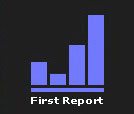First Report Customer Care
All time: 4.6
Latest / Last 30 Days: 5.0
521 Reviews
All time: 4.6
Latest / Last 30 Days: 5.0
521 Reviews
Signs of Insolvency
When assessing whether a business is at risk of insolvency, these are some of the typical characteristics that can be expected. Not all businesses will display all these issues, but some of them will be apparent.
• Late or missed payments - if the business is consistently late or misses payments to suppliers or lenders, this may be a sign of cash flow problems or insolvency.
• Overdue bills - if the business has a high number of overdue bills, it may indicate that it is struggling to meet its financial obligations.
• High level of debt - a high level of debt, especially when compared to the business's assets or revenue, could suggest financial distress.
• Decreasing revenue - a decline in revenue over a sustained period of time may indicate that the business is struggling.
• Difficulty obtaining credit - if the business cannot obtain credit or is being denied credit, it may be a sign that it is considered to be a high-risk borrower.
• Constant need for short-term financing - when a business is frequently or in on-going need of short-term financing, it could infer cash flow problems.
• Difficulty paying employees - a business is struggling to pay its staff on time may be a sign of financial distress.
• Difficulty paying taxes - a business that is late in paying its taxes could indicate cash flow issues or financial distress.
• Inventory build-up - if the business is experiencing an accumulation of inventory, then it may be struggling to sell its products or services.
• High accounts receivable - a business which has a high number of accounts receivable can infer credit control issues with difficulty collecting payments from its customers.
• High accounts payable - if the business has a high number of accounts payable, this may be a sign that cash flow prevents it from paying its own bills promptly.
• Legal issues - if the business is facing legal cases, then in the context of the overall financial status, this may signal financial distress.
• Decreasing profit margins - when a business's profit margins are falling, the reason may be that the business is failing to gain and retain customers and remain competitive.
• Difficulty obtaining new customers - if the business cannot attract sufficient numbers of new customers, this may be the result of falling demand for its products or services.
• High employee turnover - a high employee turnover may be the result of employees leaving the business due to financial concerns, cost cutting, or lower than typical earnings.
• Decreasing asset value - if the business's fixed assets such as property or plant and equipment, are decreasing in value, it may infer lack of investment due to financial constraints.
• Decreasing market share - when a business's market share is declining it may be a sign that it is not remaining competitive.
• Difficulty meeting financial obligations - if the business is having difficulty meeting the financial covenants of its loans or credit agreements, this could flag financial distress.
• High level of short-term debt - short-term debt, such as credit card debt, or high interest loans, could be because the business is relying on this borrowing to meet its financial obligations.
• Lack of cash - if the business has no or low cash reserves, this could suggest that it is not generating sufficient cash flow.
• Difficulty in meeting operational cost - key operational suppliers are critical, so an inability to pay overheads such as rent or utilities may indicate that the business has poor cash flow.
• Late payment of suppliers - not paying suppliers on time suggests poor liquidity and cash flow.
• Weak inventory - failing to maintain inventory or difficulty in purchasing new inventory may reveal underlying cash flow problems.
See more credit tips and information.In using this service you agree to the Terms and Conditions
© 2024 First Report Ltd

